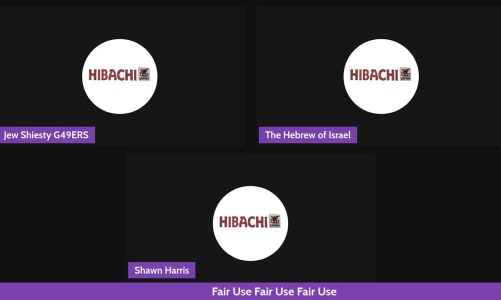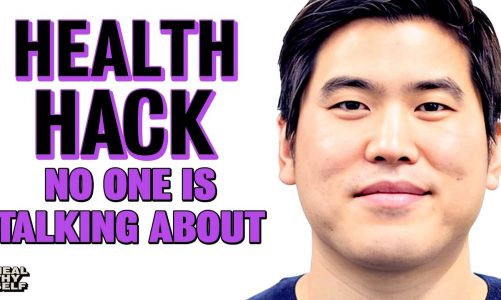In this “Ask Me Anything” (AMA) episode, Peter and Bob answer numerous follow-up questions to recently discussed deep-dive topics such as the use of continuous glucose monitors and getting the most from zone 2 exercise. They also discuss the incredible feats of cyclists in the Tour de France through the lens of the amazing performance physiology required from these athletes. Additionally, Peter ties the conversation together by sharing his foundational framework when considering different interventions, even in the absence of data from a randomized controlled trial.
If you’re not a subscriber and listening on a podcast player, you’ll only be able to hear a preview of the AMA. If you’re a subscriber, you can now listen to this full episode on your private RSS feed or on our website at the AMA #26 show notes page. If you are not a subscriber, you can learn more about the subscriber benefits here.
AMA #26 Sneak Peek
We discuss:
- Peter’s foundational framework when considering different interventions [1:30];
- Applying Peter’s framework to the idea of using a CGM [8:00];
- Why certain fruits have a bigger impact on glucose, and the limitations of a CGM can tell you [16:00];
- Importance of paying attention to insulin, and the prospects of a continuous monitor for insulin levels [20:00];
- How exercise impacts glucose and peak glucose numbers to stay under [24:15];
- Impact of anxiety on stress on glucose, and why it’s important to calibrate your CGM [26:30];
- The five main tools for managing blood glucose numbers [33:45];
- Benefits of moving or exercising after a meal, and where ingested carbohydrates get can be stored [37:15];
- How to make decisions about an action or intervention in the absence of data from a rigorous, randomized controlled trial [40:30];
- The incredible athletic feats of Tour de France cyclists [48:30];
- Different modalities for doing zone 2 exercise: running, rowing, cycling, and more [1:00:15];
- Proxies for knowing your in zone 2 short of using a lactate monitor [1:07:30];
- Monitoring lactate for zone 2 exercise [1:10:00]; and
- More.
§
Peter’s foundational framework when considering different interventions [1:30]
Intro to the AMA discussion:
Peter’s framework for different interventions as foundation for how you think about CGM and their use in different populations
- Peter’s framework for interventions helps in laying the foundation for how one should think about CGM and their use in different populations
- The framework really pertains to anything that comes across Peter’s plate
⇒ Example, when looking critically at the data around meditation (which asks a series of questions)
-First question is what is the risk of harm from doing this thing?
- If you do X, how high is the probability of harm?
-Second question is obviously the contrapositive of that. If you do X, what is the probability of benefit?
- Mirrored in the way the FDA organizes drug trials
- After you get through the preclinical data, the animal work, after the IND has been filed, your first trial in humans, which is called the phase one trial, is looking at harm
- a small trial with dose escalation that is only trying to understand if as you escalate the dose, do you see an increase in side effects?
- Very occasionally, you see some benefits in a phase one trial. And if you do, that’s interesting, but you generally can’t take it to the bank because the study is so small and generally it’s quite homogeneous
- That’s when you move on to phase two studies, which are geared towards efficacy, i.e., is this thing doing good?
- if the phase two trial is positive, you move to a much larger trial called the phase three trial, which really doubles down on efficacy
- But the real point here is you’re raising the bar, so to speak, for what you’re demanding of this.
- Again, what’s the risk of harm, what’s the probability of benefit are two obvious questions
-Third question, what’s the opportunity cost of this intervention?
- Let’s use an example, Peter came across a device that would put you in a trance
- there was this device that you would listen to and it would supposedly put you in a trance and the company that was proposing this thing had all sorts of theoretical benefits from using it (you are less likely to get breast cancer, all of these other things)
- Was there any harm in this device? As far as I could tell, no
- Was there any benefit of this device? Certainly not to the extent that they made claims
- That said, I had tried the device because a friend of mine bought it for me. I have to admit, it was the most relaxing thing I’d ever done (virtually every time I tried it, I fell asleep)
- But there were opportunity costs
- First, it was pretty expensive
- More importantly, there was a time cost
- It was two 20-minute sessions a day, much along the lines of like transcendental meditation, which is similar, but has much better data
- Well, there’s a problem because for most people who are super busy, 40 minutes a day for very questionable benefit didn’t make a lot of sense if it came at the expense of other things that undoubtedly had benefits such as could that be 40 minutes a day of actual meditation
- 40 additional minutes a day of sleep
- 40 minutes a day of exercise? All things that I would point to as having far greater evidence in favor of.
- any time you’re thinking about doing something, you want to go through that
- especially important questions to be asking when the answer is not readily apparent from RCTs that have generally already answered one and two
*Remember, The easiest RCTs to do are the ones that are based on pharmacology
- They’re generally addressing questions one and two, but they’re not really addressing question three
- And that’s because there really isn’t much of an opportunity cost to taking a pill outside of the economic cost (the time cost of it is relatively low)
- When it comes to RCTs that are more intervention based such as exercise, yes, you want to be able to think about the time cost
Applying Peter’s framework to the idea of using a CGM [8:00]
The framework applied to CGM in non-diabetics
- As you look to something like CGM in the case of non-diabetics, this framework is very helpful
- At this time, we don’t have great RCTs to point to that say in people who are not yet diabetic, there is a benefit to using CGM
-First ask the question, What is the risk of harm?
- when we talk about CGM specifically, the risk of harm is very low (but now zero)
- Example, the most obvious thing that comes to my mind is anxiety that it can stoke. It can create obsession in someone
- For instance, we have some patients who have a history of eating disorders. These are patients I would not in any way, shape or form advocate the use of CGM
-Secondly, Is there any chance of it doing good?
- First potential benefit could be insight-based good, which is teaching you what your carbohydrate tolerance is
- Second potential benefit is behavior modification, which is effectively a strapped on version of the Hawthorne effect
- When you’re wearing a CGM, you’re basically utilizing a tool that is monitoring you. There is no shortage of data to support the idea that when people are asked to monitor food intake, they make changes in the right direction.
- How you create accountability for patients. You say, “Look, we’re going to check in once a day and I just want you to tell me what you ate”
- even if you provide no other instruction, just need you to tell me what you ate,” that level of accountability immediately changes a person’s behavior
-Third question, what is the opportunity cost?
- The biggest opportunity cost is the economic cost
- If you are not diabetic, you are not going to have your insurance company cover one of these devices
- There are really three companies that make CGMs in the clinical grade
- Then there are lots of companies that help with plugging in those CGMs into their apps to help users with their goals, be it weight loss or otherwise, such as…
- But these devices are not cheap
- daily cost of CGM is about $10 per day
- That’s a huge expense assuming you need it every minute of every day. I don’t think you do. I think you can gain a lot of insight using these things periodically. I don’t think this is something you need to be tethered to every minute of every day
- There are some people like me who enjoy that
- daily cost of CGM is about $10 per day
{end of show notes preview}


